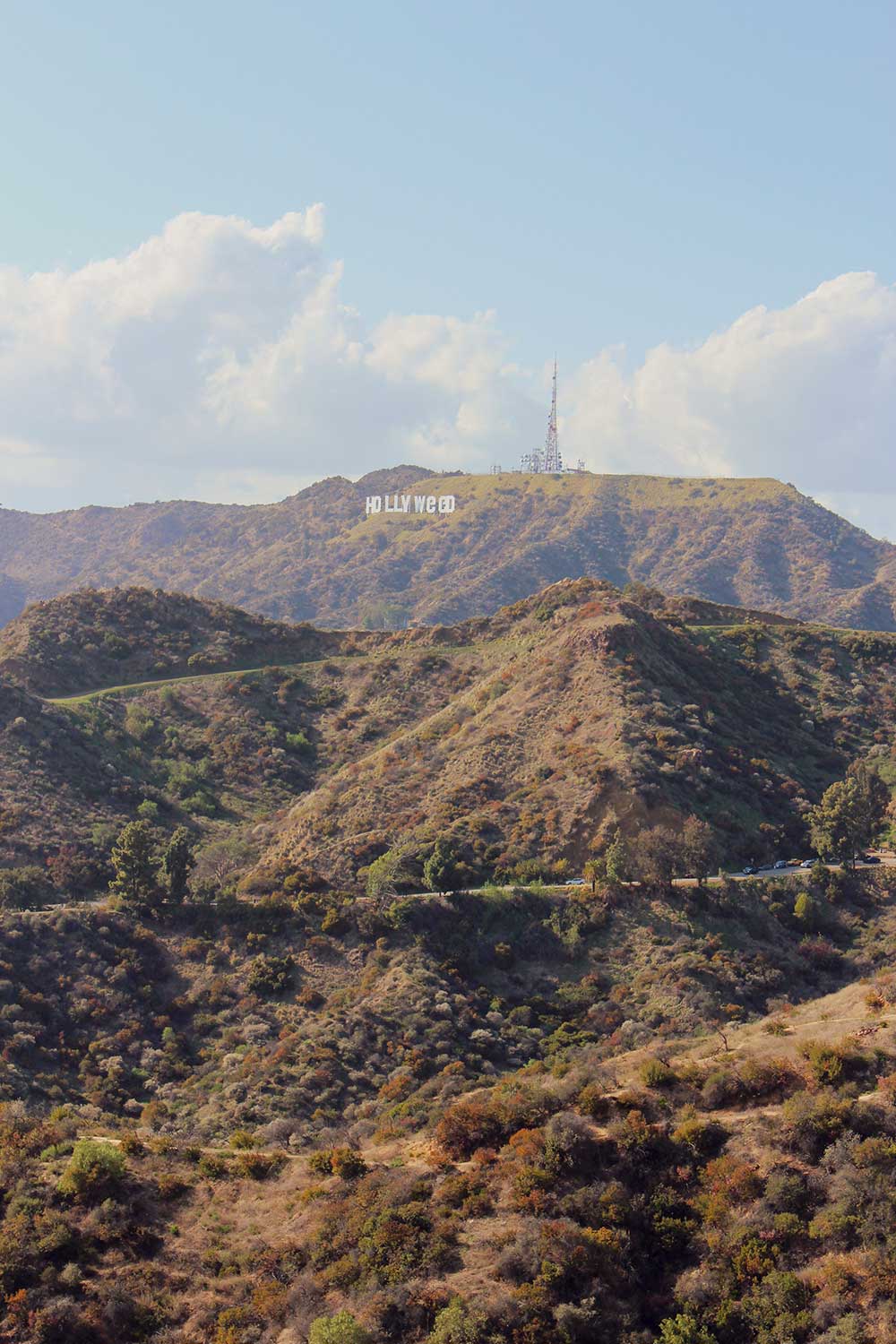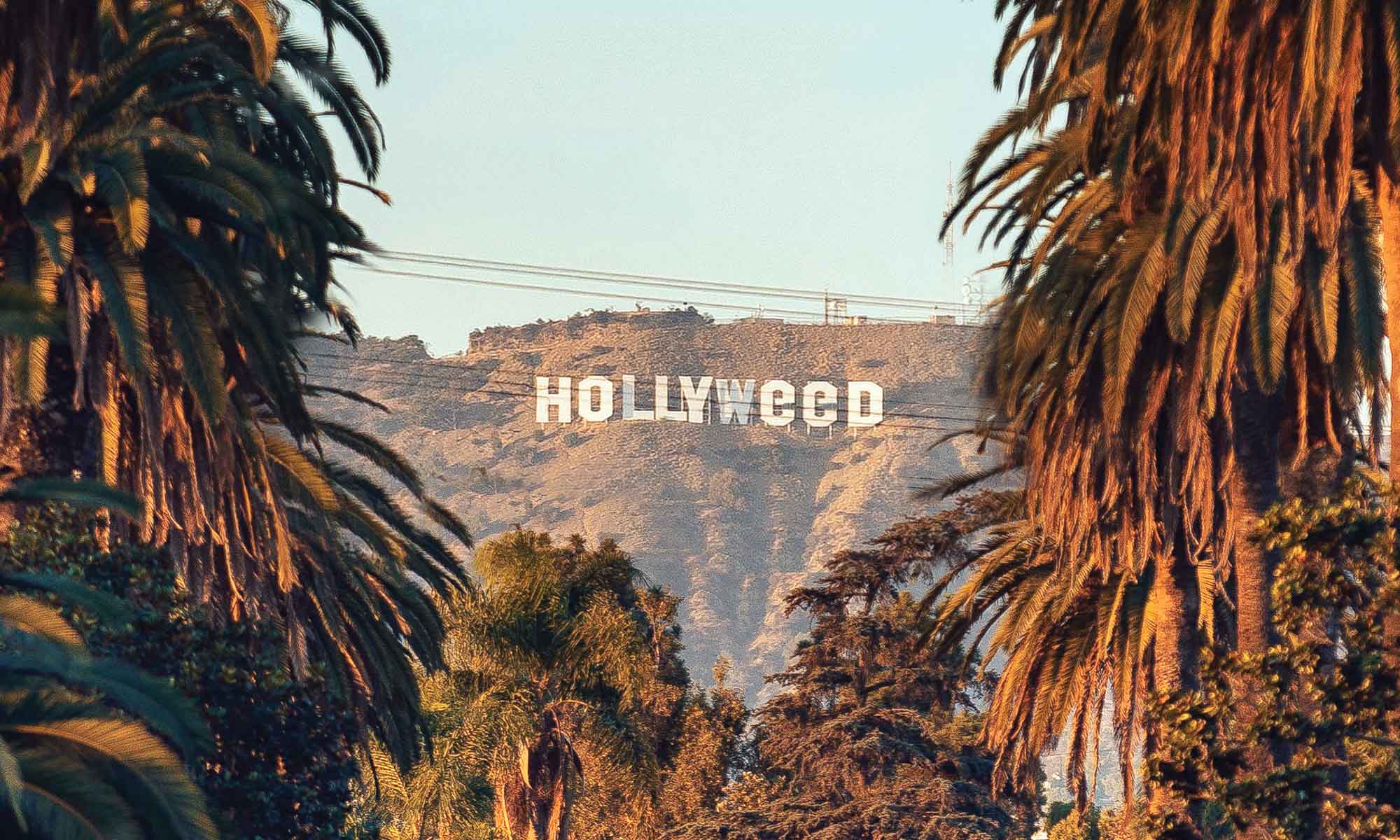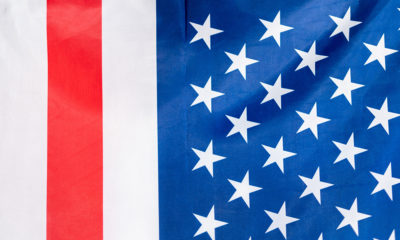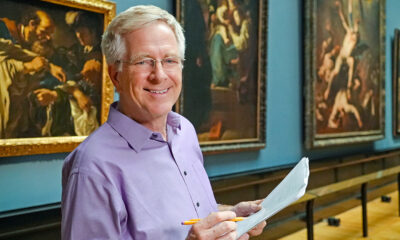Sign O’ the Times
The “Hollyweed” reveal of January 1, 2017, represented more than the onset of legalization in California—it was art making a difference.
It was New Year’s Day 2017, just 365 days before California flipped on the legalization switch. Angelenos woke up to the usual post-NYE content—extravagant rose floats, embarrassing party photos and resolution posts. But something was amiss in the hills: The iconic Hollywood sign said “HOLLYWeeD.” What?!
News reports worldwide called it “vandalism” masterminded by a “prankster” saying the act might have been the work of a “thrill seeker.” The Los Angeles Times quoted the Los Angeles Police Department Security Services division saying security footage around the sign showed a person dressed in black at 3am “climbing up the mountain, scaling the sign’s ladders and hanging tarpaulins over the Os to change them to Es.”
“My first thought was that it was some kind of weird PR stunt,” says Alberto Sandomir, a cannabis grower from Oroville who saw the Hollyweed sign that morning. He had just moved back to LA and, like most operators in the weed market circa 2018, was distributing flower locally and out of state. “It certainly brought a lot of attention to the weed business in LA in general and made a statement about how much Los Angeles is a part of the cannabis culture.”
LAPD launched an investigation to figure out who meddled with the iconic sign to no avail. A full week later artist Zach Fernández, who goes by his artist name @jesushands on Instagram, turned himself in and was booked on suspicion of misdemeanor trespassing. Members of the Los Angeles City Council were angry because the spectacle attracted droves of Southern Californians to the area to see the sign. Former councilman David Ryu encouraged the city attorney and the LAPD at the time to pursue a case against the artist even though there was no damage to the sign.
Fernández, who says he’s a daily cannabis consumer, told media outlets at the time it wasn’t a prank. It was an art installation he considered sacred. Swapping the double Os to Es was also a hat tip to artist Danny Finegood who had himself modified the iconic sign to read “HOLLYWeeD” nearly half a century ago on January 1, 1976, the day cannabis possession was reduced from a felony to a misdemeanor in California. Conveniently, Fernández’s rendition of Hollyweed occurred just three months after the Golden State approved Proposition 64 in the 2016 election.
But could the art installation have had opportunistic intentions? Dr. Dina, the woman who inspired the character “Nancy Botwin” on the show Weeds, co-owns SoCal’s oldest continually operating dispensary, Alternative Herbal Health Services. She implies the Hollyweed sign was essentially marketing. “Hollyweed was recreated a few years back because the original photographer refused to let anyone use his photo and a CBD brand recreated it for their own branding images,” says Dr. Dina, whose nickname was bestowed upon her by Snoop Dogg. “I know this because one of my first employees at the dispensary was the son of the original photographer whose idea it was!”

Reflecting on the most recent iteration of Hollyweed, hindsight reveals context we couldn’t decipher in 2017. Hollyweed wasn’t just a cheeky art installation, and its symbolism arguably holds more inertia than its ’70s predecessor: The sign foreshadowed cannabis’ ascent into the mainstream. It signified the City of Angels’ dominance in the California market, the rise of the “suits and ties,” the line between legal and “traditional” operators, Apple store-chic dispensaries, weed parties in the Hollywood Hills, strains named after appealing moods, and the overall “Coachellafication” of cannabis.
“There was a changing of the guard that happened when Prop 64 was approved,” Sandomir says. “The Hollyweed sign was a sign of things really shifting into a different landscape for the legacy famers.”
Dr. Dina also notes the Hollyweed sign represents a figurative changing of the guard. “We started as not-for-profit collectives operated by real freedom fighters who risked their freedom on a daily basis so they can help others only for this industry to turn into for-profit businesses run by opportunists looking to cash out, and who don’t care about patients,” she says. “Overnight, patients became customers, and we lost our ability to provide free meds to sick people who really needed it.”
Hollyweed also represented the convergence of media, entertainment and cannabis. In January 2017, High Times announced it was moving its headquarters to LA after being in New York for more than four decades. Bong Appétit, a television series on Viceland featuring host Abdullah Saeed throwing elaborate cannabis dinner parties,launched its first episode on December 14, 2016.
“It was such a sweet time for us and the show,” says Jason Pinsky, producer of Bong Appétit, who filmed an episode of the show with Fernández shortly after he turned himself in. “When I look at what we did in 2017 versus future seasons—such as season three, once regulation and retail sales were in effect—everything had to be done with receipts and through the system. Bong Appétit in the halcyon days of 2017 is when we built the pantry. Today, we wouldn’t have been able to do what we did then without massive budgets. The symbolism of the Hollyweed sign was a massive celebration for JesusHands and what he did, for Vice and for Bong Appétit and what we were doing: mainstreaming cannabis to a global audience.”
Pinsky says he came out to Hollywood for the convergence of cannabis, industry and entertainment. The Hollyweed sign represents the manifestation of all of that for him personally, and the blossoming of California’s cannabis industry.
Sometimes the line is thin between art and vandalism, but I’d argue the Hollyweed sign revealed most people can’t tell the difference between the two, particularly the LAPD and most of the city’s politicians. And even if the signage was marketing, defacing one of the world’s most recognizable landmarks garnered a massive response, which is always the end goal for an artist.
Hollyweed 2017 will go down in history as a precursor to the subsequent tectonic shifts that are still occurring in California’s cannabis market. But on that New Year’s Day, not so long ago, the power of art once again captured the moment—and a city’s collective imagination—perfectly.
This story was originally published in issue 47 of the print edition of Cannabis Now.



















